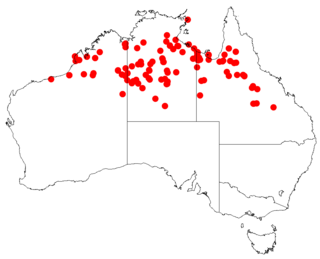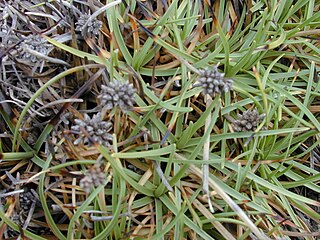Fimbristylis acicularis is a sedge of the family Cyperaceae that is native to northern and north eastern Australia.
Fimbristylis acuminata, commonly known as pointed fimbristylis, is a sedge of the family Cyperaceae that is found in tropical areas extending from India, through parts of South East Asia and into northern Australia.
Fimbristylis aestivalis commonly known as summer fimbry, is a sedge of the family Cyperaceae that is native to Australia. The specific epithet, aestivalis, is derived from Latin and means "pertaining to the summer".
Fimbristylis ammobia is a sedge of the family Cyperaceae that is native to Australia.
Fimbristylis blakei is a sedge of the family Cyperaceae that is native to Australia.
Fimbristylis blepharolepis is a sedge of the family Cyperaceae that is native to Australia.

Fimbristylis caespitosa, commonly known as fringe-rush, is a sedge of the family Cyperaceae that is native to northern parts of Australia.
Fimbristylis cardiocarpa is a sedge of the family Cyperaceae that is native to Australia.
Fimbristylis cephalophora is a sedge of the family Cyperaceae that is native to Australia.
Fimbristylis compacta is a sedge of the family Cyperaceae that is native to Australia.

Fimbristylis cymosa, commonly known as tropical fimbry, or St. John's sedge, is a sedge of the family Cyperaceae that is native to Australia.
Fimbristylis denudata is a sedge of the family Cyperaceae that is native to Australia.
Fimbristylis depauperata is a sedge of the family Cyperaceae that is native to Australia.
Fimbristylis dictyocolea is a sedge of the family Cyperaceae that is native to Australia.
Fimbristylis elegans is a sedge of the family Cyperaceae that is native to Australia.
Fimbristylis eremophila is a sedge of the family Cyperaceae that is native to Australia.
Fimbristylis laxiglumis is a sedge of the family Cyperaceae that is native to Australia.
Fimbristylis leucocolea is a sedge of the family Cyperaceae that is native to Australia.

Fimbristylis littoralis, commonly known as lesser fimbry or lesser fimbristylis, is a sedge of the family Cyperaceae that is native to many countries in Africa, Asia and Oceania including across much of northern Australia.
Fimbristylis microcarya is a sedge of the family Cyperaceae that is native to Australia.



